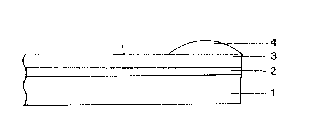Some of the information on this Web page has been provided by external sources. The Government of Canada is not responsible for the accuracy, reliability or currency of the information supplied by external sources. Users wishing to rely upon this information should consult directly with the source of the information. Content provided by external sources is not subject to official languages, privacy and accessibility requirements.
Any discrepancies in the text and image of the Claims and Abstract are due to differing posting times. Text of the Claims and Abstract are posted:
| (12) Patent Application: | (11) CA 2096103 |
|---|---|
| (54) English Title: | ELECTRICAL CONTACT ELEMENT |
| (54) French Title: | ELEMENT DE CONTACT ELECTRIQUE |
| Status: | Deemed Abandoned and Beyond the Period of Reinstatement - Pending Response to Notice of Disregarded Communication |
| (51) International Patent Classification (IPC): |
|
|---|---|
| (72) Inventors : |
|
| (73) Owners : |
|
| (71) Applicants : |
|
| (74) Agent: | MACRAE & CO. |
| (74) Associate agent: | |
| (45) Issued: | |
| (22) Filed Date: | 1993-05-12 |
| (41) Open to Public Inspection: | 1994-01-22 |
| Examination requested: | 1994-08-03 |
| Availability of licence: | N/A |
| Dedicated to the Public: | N/A |
| (25) Language of filing: | English |
| Patent Cooperation Treaty (PCT): | No |
|---|
| (30) Application Priority Data: | ||||||
|---|---|---|---|---|---|---|
|
A b s t r a c t
The invention relates to an electrical contact element
having a core part made of an iron/nickel alloy and
having a gold/tin alloy, which is applied to a portion of
the core part and which serves as a soldered connection,
with a tin content of from approximately 10 to
approximately 40 % by weight in which, between the core
part and the gold/tin alloy, an adhesive layer is
disposed on the surface of the core part. In order to
provide a material for the adhesive layer which, while
ensuring approximately identical electrical and
physical/chemical properties, is cheaper than gold and at
the same time, like gold, prevents the uncontrolled
running of the gold/tin alloy on the surface of the
contact element, the adhesive layer is formed by a
silver/tin alloy with a tin content of from approximately
10 to approximately 50 % by weight, the rest being
silver.
Note: Claims are shown in the official language in which they were submitted.
Note: Descriptions are shown in the official language in which they were submitted.

2024-08-01:As part of the Next Generation Patents (NGP) transition, the Canadian Patents Database (CPD) now contains a more detailed Event History, which replicates the Event Log of our new back-office solution.
Please note that "Inactive:" events refers to events no longer in use in our new back-office solution.
For a clearer understanding of the status of the application/patent presented on this page, the site Disclaimer , as well as the definitions for Patent , Event History , Maintenance Fee and Payment History should be consulted.
| Description | Date |
|---|---|
| Inactive: IPC from MCD | 2006-03-11 |
| Inactive: IPC from MCD | 2006-03-11 |
| Inactive: IPC from MCD | 2006-03-11 |
| Inactive: IPC from MCD | 2006-03-11 |
| Inactive: IPC from MCD | 2006-03-11 |
| Application Not Reinstated by Deadline | 1997-05-12 |
| Time Limit for Reversal Expired | 1997-05-12 |
| Deemed Abandoned - Failure to Respond to Maintenance Fee Notice | 1996-05-13 |
| Request for Examination Requirements Determined Compliant | 1994-08-03 |
| All Requirements for Examination Determined Compliant | 1994-08-03 |
| Application Published (Open to Public Inspection) | 1994-01-22 |
| Abandonment Date | Reason | Reinstatement Date |
|---|---|---|
| 1996-05-13 |
Note: Records showing the ownership history in alphabetical order.
| Current Owners on Record |
|---|
| W. C. HERAEUS GMBH |
| Past Owners on Record |
|---|
| GUNTER HERKLOTZ |